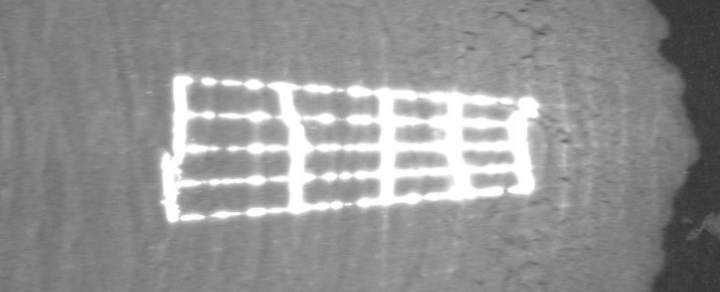
We conduct research on dense granular material rheology — notably wet and unsaturated media — and we also investigate their acoustic properties. We use inclined planes, rheometers and more recently a rotating cell allowing us to trigger avalanches in quasistatic conditions. We also study these materials through numerical simulations with over twenty years of experience in the domain.
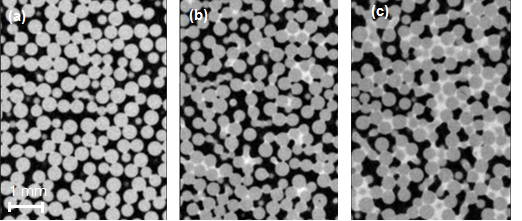
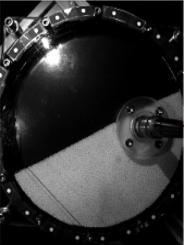
Structure and Rheology of Wet, Unsaturated Granular Media
A. Fall, J.-N. Roux, F. Chevoir, A. Awdi (PhD), C. Chateau (ME)
Collaborations : S. Debœuf (d’Alembert)
Experiments on the rheology of granular materials wetted by a silicone oil are in good agreement with discrete element numerical simulations conducted in-house. Both follow rheological models of µ(I)-type, generalised to include a characteristic pressure P* defined as :
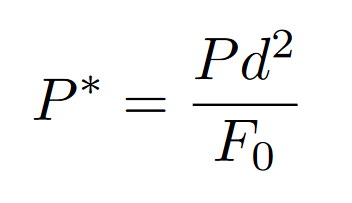
With P the confinement pressure, d the grain diameter and F0 the inter-granular, attractive force (here proportional to the surface tension). More recently, the experimental study of the rheology of these materials has been extended to inclined plane experiments in collaboration with S. Deboeuf from Institut Jean le Rond d’Alembert. The micromorphology of these materials is observed by Discrete Element method in numerical simulations and by X-ray microtomography in a tailor-made experimental setup allowing us to measure the microstructure dynamics.
We have used advanced image segmentation algorithms leveraging Articifial Intelligence tools to precisely analyse the microstructure (grain arrangement, liquid bridge morphology evolution under shear) that can go beyond the pendular regime of isolated liquid bridges (PhD thesis of Ahmad Awdi, co-supervised with C. Chateau of the Multi-Échelle group). Another recent development is the study of the viscous effects in these liquid bridges for steady shear and large amplitude oscillatory shear (LAOS). The rheological properties of these systems are then characterised by a visco-inertial number J combining the classical inertial number I from granular matter rheology and the viscous number Iv characteristic of suspensions in the Stokes regime :
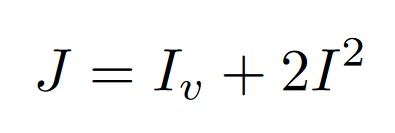
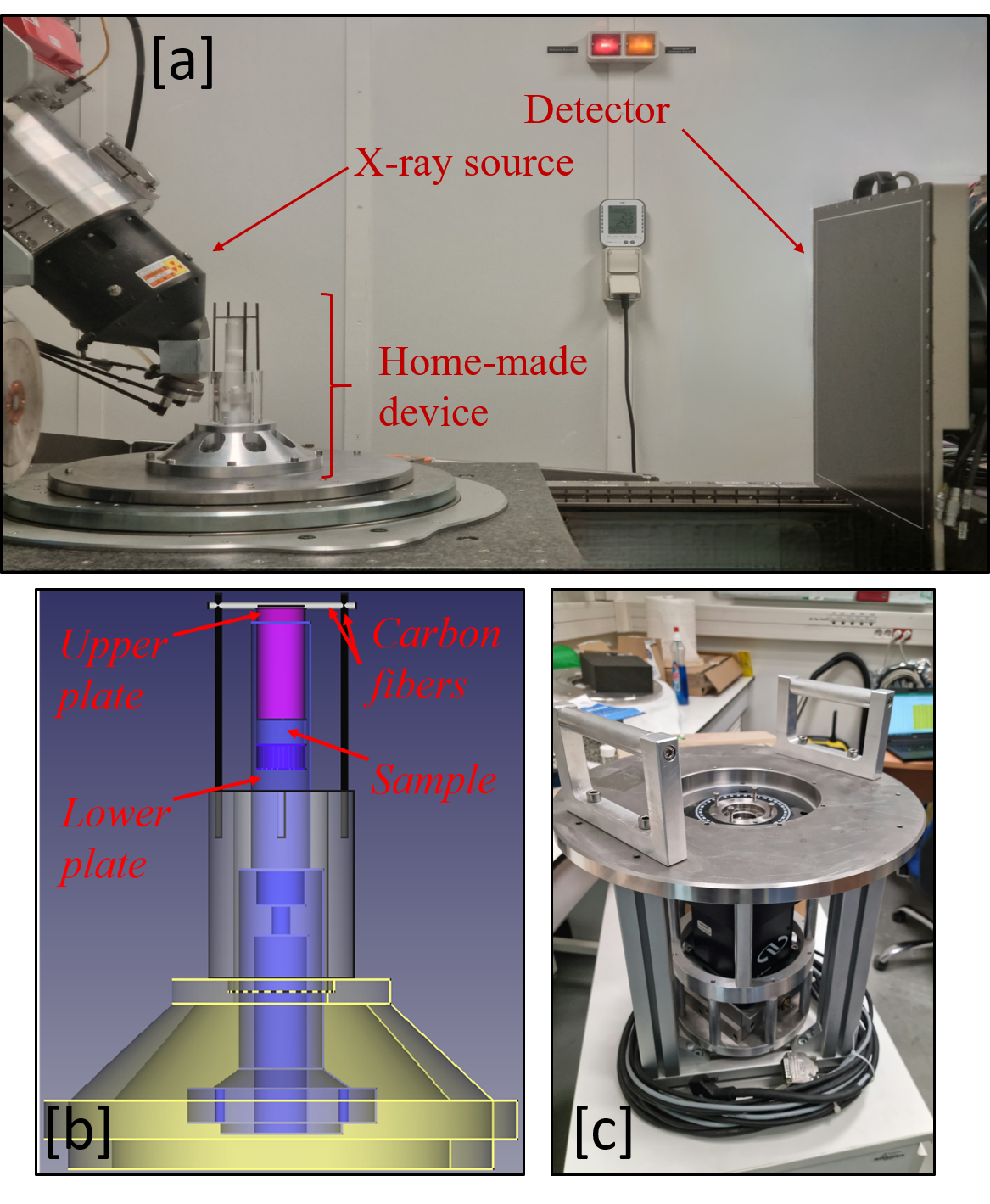
Measuring the water content in an insaturated granular material using X-ray microtomography. (a) Microtomograph and the in-place experimental setup (b) Cross-sectional view of the shear cell. (c) Translation and rotation stage at the bottom of the shear cell, hidden from view in Panel (a).
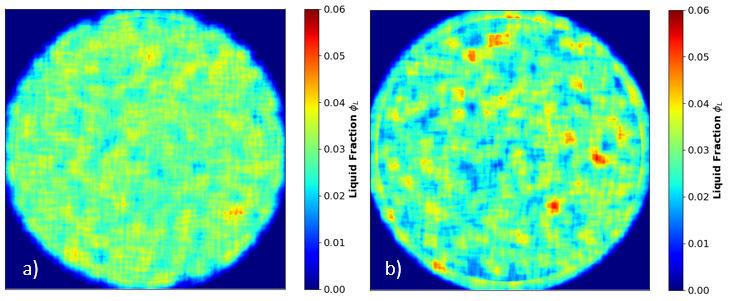
Water content in a slice of an unsaturated wet granular material (left) in the initial state (right) after 10 minutes under shear.
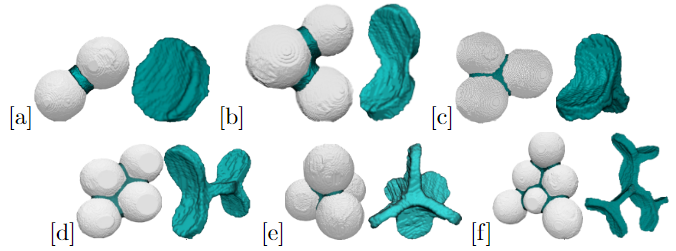
Simple liquid bridges and more complex morphologies between particle pairs (triplets, quadruplets, …) of unsaturated wet granular materials.
References
- Rheology and microstructure of unsaturated wet granular materials: Experiments and simulations, D. Hautemayou, M. Badetti, A. Fall, S. Rodts, P. Aimedieu, J.-N. Roux, and F. Chevoir, Journal of Rheology 62(5), 1175–1186 (2018).
- Cohesion and aggregates in unsaturated wet granular flows down a rough incline, S. Deboeuf and A. Fall, Journal of Rheology 67(4), 909–922 (2023)
- Viscous dissipation in large amplitude oscillatory shear of unsaturated wet granular matter, A. Awdi, C. Chateau, F. Chevoir, J.-N. Roux and A. Fall, Journal of Rheology 67(2), 365–372 (2023)
Acoustic Wave Diffusion in Immersed Granular Materials
J. Léopoldès, V. Langlois, I. Awada (PhD), M. Bornert (ME)
We use elastic wave propagation in a simple numerical model to characterise an immersed granular material at different time and spatial scales, and to identify potential new physical variables (e.g. particle rotation). In the PhD thesis of Ibrahim Awada, we study multiple scattering of ultrasound waves in dense granular suspensions. We have shown that correlating successive transmitted ultrasound signals allows us to estimate local strain at the grain scale down to 0.00001. This method has been applied to a granular material under plastic solid regime, with a sample located in a rotating drum oscillating below the angle of repose. We quantitatively measure the progressive compaction of the granular material and detect local, precursor events before the avalanches. We are currently writing an article on these results.
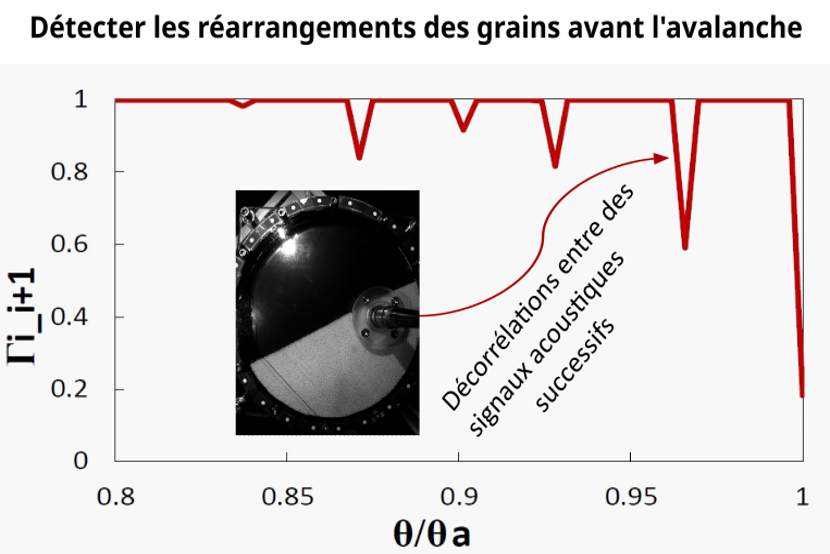
References
- Probing intermittency and reversibility in a dense granular suspension under shear using multiply scattered ultrasound, J. Léopoldès and X. Jia, Soft Matter 16, 10716-10722 (2020)


